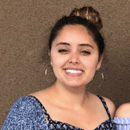The month of October is many things: the start of Spooky Season, Hispanic Heritage Month, and Breast Cancer Awareness Month. If you did not already know, Breast Cancer Awareness Month is an annual international health campaign sponsored by breast cancer charities to increase awareness and raise funds for research into treatment methods, preventions, and causes.
Cancer is not a fun discussion topic, but since 1 in 8 women in the United States will develop invasive breast cancer through the course of her lifetime, it is an important discussion topic. We all know that we should be checking for signs of breast cancer, but for those of us who have not been taught what to look for, it can seem like a weird and hard to find process. Thankfully, the earlier breast cancer is diagnosed the better chances of successful treatment, so ladies, it is important to know that you should check your breast regularly.
According to Breast Cancer Now, women should check the whole breast area including upper breast and armpits. It’s as simple as TLC: Touch, Look, Check.
Touch: Do you feel anything unusual? Lumps are not always seen, but it is possible to feel for one.
Look: Are there any changes in shape or texture? When it comes to size and shape, if you your breast seems different than before with one becoming larger or hanging lower it may call for a time to check in with your doctor. For texture, does the skin texture feel different or look like it’s puckering or dimpling? Has the color changed? Do your breast look red or inflamed? Finally, your nipple may also be a sign if they, for example, are inverted when it typically points outwards. Other signs include nipple discharge or rash/crusting on your nipple.
Check: If you find or see anything unusual about your breast, get checked out by a licensed medical professional.
While only 5% of all breast cancer cases occur in women under 40 years old, it is important to be aware of the signs because it can strike at any age.


